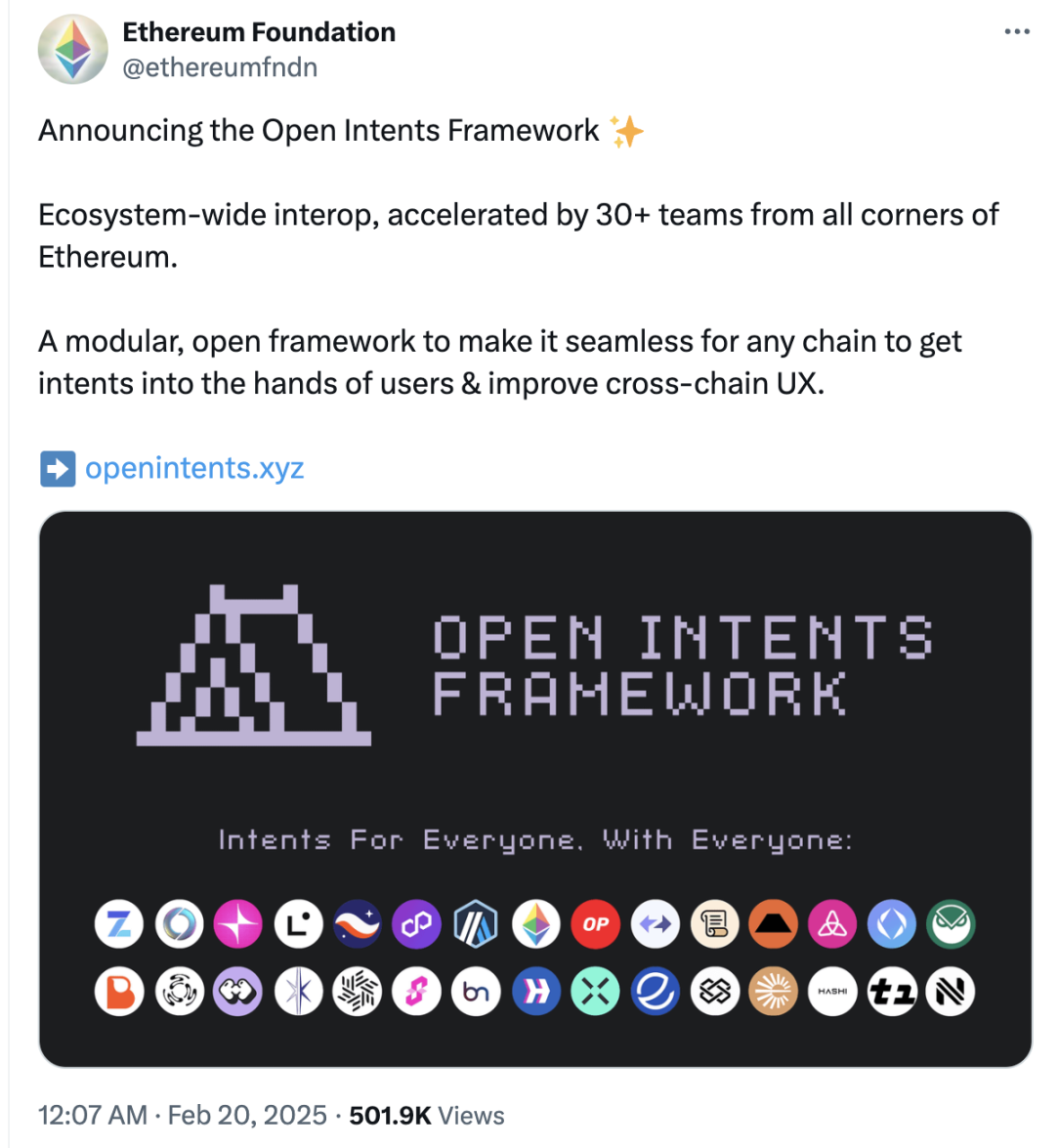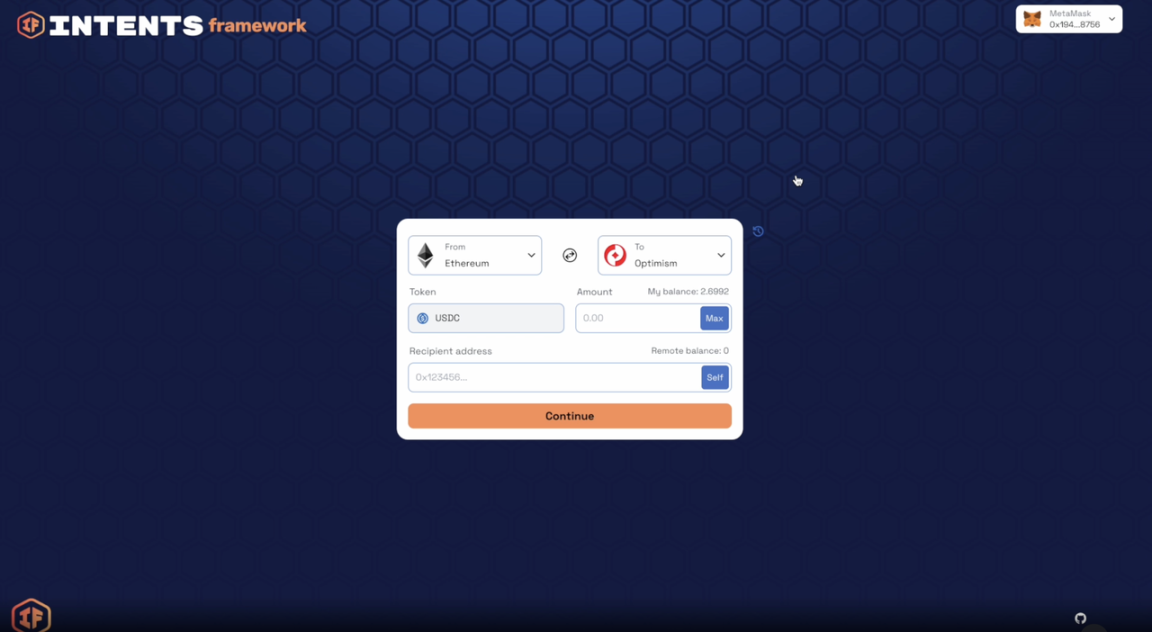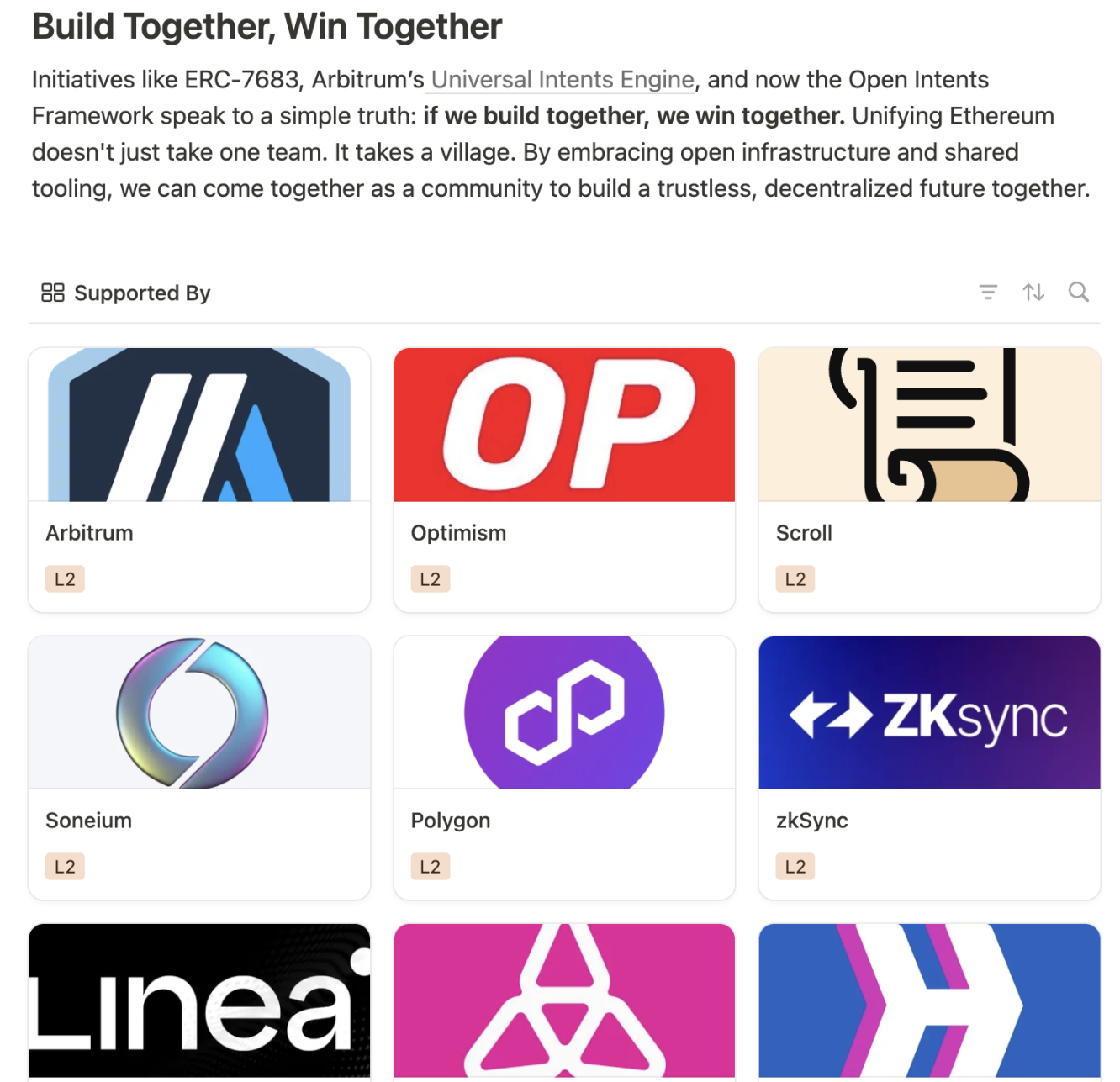The Open Intention Framework may open the era of cross-chain intent standardization and solve Ethereum’s much-criticized multi-chain fragmentation problem
Author: Alex Liu, Foresight News
The dilemma of the intention paradigm and the Open Intentions Framework
As Ethereum moves towards a multi-chain future, users shuttle through Layer2 networks such as Arbitrum, Base, and Mode to interact with DeFi, social, AI and other scenario use cases, but they also suffer from complex and inefficient cross-chain operations. This fragmented experience has given rise to the “intentions” paradigm-users only need to declare goals (such as “exchanging 100 USDC on the Base chain for 100 USDT on the Arbitrum chain”), and professional solvers (Solver) automate complex processes such as path planning and transaction settlement. However, problems such as high technical thresholds for building an intention system, difficult liquidity management, and weak ecological collaboration have always restricted the scale of this paradigm.

The birth of the Open Intention Framework is the collective response of the Ethereum community to this challenge. This open source framework, jointly sponsored by the Ethereum Foundation, Hyperlane and Bootnode, focuses on “modularity” and “community co-construction” and attempts to transform the intended infrastructure from a closed “island” to an open “Lego bricks”.
Deconstructing the stack of intentions: From repetitive wheel building to plug-and-play
Traditional intent protocols require building full-stack technologies such as smart contracts, solvers, and settlement layers from scratch, and developers often fall into the quagmire of repeated development. The Open Intention Framework breaks the deadlock with three modular tools:
ERC-7683 Standard Reference Implementation
As the common language for cross-chain intents, ERC-7683 defines a standardized interface for intent creation, execution and settlement, and has received support from community leaders such as Vitalik Buterin. This framework not only provides open source reference code for ERC-7683, but also complements the Mainnet Contract of Across Protocol, ensuring that developers can flexibly innovate under unified standards.
“Programmability” of the solver
The built-in TypeScript solver in the framework provides cross-protocol common indexing, transaction submission and liquidity rebalancing functions, based on which developers can quickly customize exclusive solution logic. For example, Eco Protocol is adapting it to the official solver of Eco Routes, while Everclear is injecting automated rebalancing capabilities into it to reduce liquidity management costs.
“Building block assembly” of smart contracts
From basic limit order swaps to settlement mechanisms that support Hyperlane ISM, the framework’s preset smart contract library allows developers to combine on demand. In the future, solutions such as the Arbitrum Broadcast Standard and RRC-7755 Storage Proof can be accessed as modules to realize diversified evolution of the intention settlement layer.

Intent Framework Front-End UI Example
Community resonance: Co-evolution from tools to ecology
The ambition of the Open Intentions Framework goes beyond technical tools. It attempts to activate a “collective experiment in the ecosystem of intentions”:
Open collaboration with solver networks
Platforms such as Khalani plan to connect decentralized solvers into a shared network, and Uniswap’s The Compact protocol explores the combination of intent and resource locking. These innovations can be quickly integrated through the framework to form solution capabilities covering the entire chain.
Diversity experiment at the settlement level
Developers can freely choose Hashi’s oracle aggregator, Espresso’s confirmation layer, or Optimism’s superchain’s native interoperability solution as settlement modules to seek the best solution between security and efficiency.
Seamless connection of user experience
Applications such as Superbridge have tried to embed framework modules into the front-end interface. In the future, wallets and DApps will only need to call standardized interfaces to provide users with a “one-click cross-chain” silky experience.
Co-author’s Declaration: Sewing a multi-chain world with open agreements
When Arbitrum launched the universal intent engine, the Base Experimental RRC-7755 standard, and the Open Intents Framework open source modular tool, the Ethereum community is responding to the biggest proposition of the multi-chain era with “open collaboration”: how to make users invisible to the existence of chains?
The answer to this question may be hidden in the underlying design of the framework-it does not attempt to define a single technology path, but rather reduces collaboration costs through standardized interfaces and allows developers to focus on differentiated innovation. As its declaration said: “If we build together, we will win together.”

Currently, the code base of the Open Intention Framework is open on GitHub, and the audit work will be completed in the first quarter of 2025. Whether it is exploring new order logic (such as cross-chain Dutch auctions), experimenting with liquidity management solutions, or adding intent features to existing protocols, developers can join this open source experiment and work with more than 30 ecosystem teams to weave the seamless future of Ethereum.
There are no lonely heroes on the road to a “single-chain experience”, but the power of open agreements will eventually lead to the same goal in a multi-chain world.



